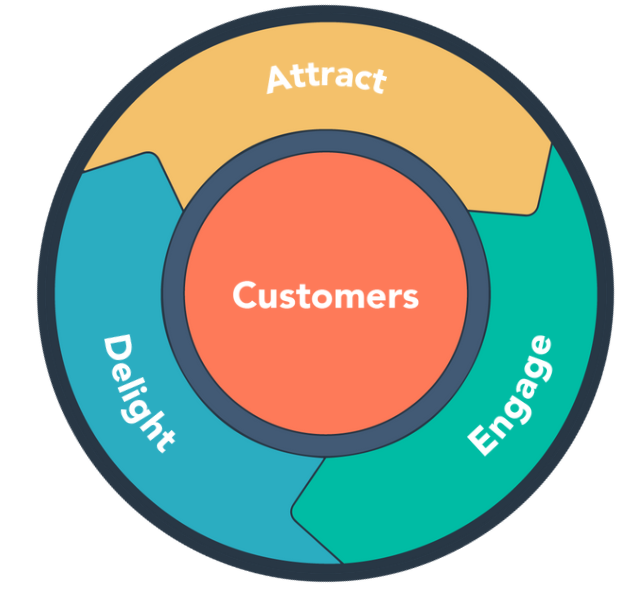By Sam Hirbod on Dec 6, 2018 6:51:45 PM
I want you to ask yourself when it comes to your present marketing, sales and services, are you delighting your customers? Are you available when they expect you to be, through the channels they expect you to be and is your level of service meeting their expectations?
We’re living in a time where organizations are killing themselves by investing a vast amount of resources in becoming future-proof rather than surviving the present.
As we have thousands of tools at our disposal and data regarding all that we touch, we’ve become enthralled with spending time analyzing everything from what the next version of our website will look like to how we can prepare for the latest digital channel.
In fact, the majority of organizations I’ve been coaching throughout the years feel overwhelmed when it comes to whether they’re ready for the future or not.
Organizations are spending an abundance of time on future predictions when they’re not even doing their job in the present. What will it matter if you invest millions of dollars in the latest trends when your existing customer base is dissatisfied.
Don’t get me wrong, I think it’s great that we are thinking about the future and executing multiple events regarding just how to survive the future of marketing, sales and services but I’m concerned. I’m concerned over the fact that in today’s rapid moving world, we are over-complicating and over-analyzing what’s ahead of us rather than focusing on what’s right in front of us.
Maybe you’re not available when your customers expect you to be, maybe you’re not reachable through the channels they’re using (be it website, phone or Facebook) or maybe you don’t remember past interactions which means you repeatedly ask the same questions every time.
Whatever the reason, as long as you’re not meeting customer expectations it’s only a matter of time before they end up with a competitor who’s doing a better job at meeting expectations.
Customer expectations are higher than they ever were before. When customers cannot reach your organization when they expect to, through the channels they expect to or when your service is not what they expected, they will look elsewhere. They will not only let their friends and family know about you disappointing them but they will let strangers know as well through reviews, social media or videos. What was once considered a minor inconvenience back in the day can set your entire customer relationship at stake today.
These are all signs of the Sales and Marketing Funnel era reaching its end. The Funnel is dying as customer are no longer an output of a funnel but a central part in customer acquisition.
This is the reason why we at HubSpot shifted our whole business model towards the flywheel.
As Jon Dick, Hubspot’s VP of Marketing, eloquently stated “Funnels produce customers, but don’t consider how those customers can help you grow. Ignoring how customers can help you grow is perilous in today’s world.”Customers are no longer the output of a elongated sales process where the marketing and sales team did all the work. They are the very core of all efforts.
With a generation shift where Millenials are gaining more and more purchasing power. 92 % of your prospects become customers due to word of mouth. They trust how your customers preach about your offering more than seeing an ad describing how amazing you are. And, if you don’t delight them, they’ll make sure to make everyone know about it. According to Harvard Business Review, acquiring new customers is 5-25 times more expensive than retaining existing ones. Bain & Company states that a 5 % reduction in customer churn can increase your profits by 25 - 95 %.
These are all signs of the Sales and Marketing Funnel era reaching its end. The Funnel is dying as customer are no longer an output of a funnel but a central part in customer acquisition. It’s time to focus on creating momentum, reducing friction and scaling your business. It’s time to be more flexible. The flywheel helps us visualize this move where your customer is no longer an output of a linear process but the center of all decisions in a circular process. The faster it spins and larger it grows, the more customers you generate.In a funnel model, all force is applied to attract and acquire customers. In a flywheel model, you also apply force to delight those customers and make them successful which increases your momentum. In order to make the most of the momentum, you need to reduce friction, e.g. Improving conversion rates, customer churn and internal processes. Once you have momentum and are running frictionless, you can invest in scaling your business. e.g. through hire and upselling to existing customers.
We are entering a new era of business. In a world where products can be copied and prices can be beaten, knowing and adapting to your customers is the new competitive advantage, to anticipate their needs better than anyone else, to meet them where they are and where they’re going.
So once again, I want you to ask yourself when it comes to your present marketing, sales and services, are you delighting your customers? Are you available when they expect you to be, through the channels they expect you to be and is your level of service meeting their expectations? Only when you can answer a resounding yes to these questions and that you are surviving the present should you invest in the future.

